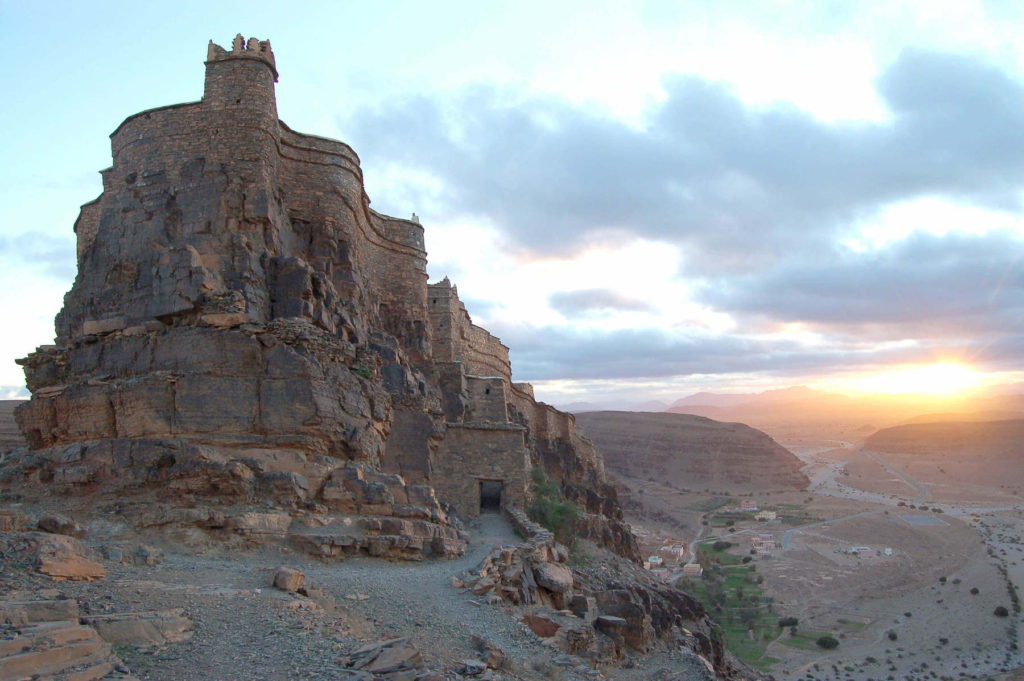I am excited to inform you that Morocco has announced it will include the Collective Granaries, known locally as Igoudar, to the list of UNESCO’s World Heritage Sites.
The announcement comes from the Minister of Culture, Othman El Ferdaous.

The sun shines down on agadir Aguellouy, a granary along the Anti-Atlas Mountains in southern Morocco (photo by Amar Grover)
Since 2015, GHF’s project in Morocco has invested in the revitalization of these unique heritage structures and the regeneration of the economies around them. In partnership with the Moroccan public and private sectors, our goal has been to redirect tourism in the now densely occupied coastal areas and major tourist cities towards the country’s rural areas with their often-undervalued cultural heritage. Our strategy in the long-term is to stimulate forms of rural cultural heritage tourism that can serve to benefit the communities.
The igoudar were built by the Amazigh civilization and were carved directly into the rock to protect the community’s yearly harvest from floods, bandits, and tribal clashes. Today, they remain a powerful symbol of heritage for the Amazigh societies, and they contribute to the cultural identities of many Moroccan people.

During harsh weather conditions, Amazigh relied on igudars to keep their food dry for many years.
We wish to extend our appreciation to our supporters, our partners in Morocco, UNESCO, and the Moroccan people.
In solidarity,

Nada Hosking
Global Heritage Fund, Executive Director

